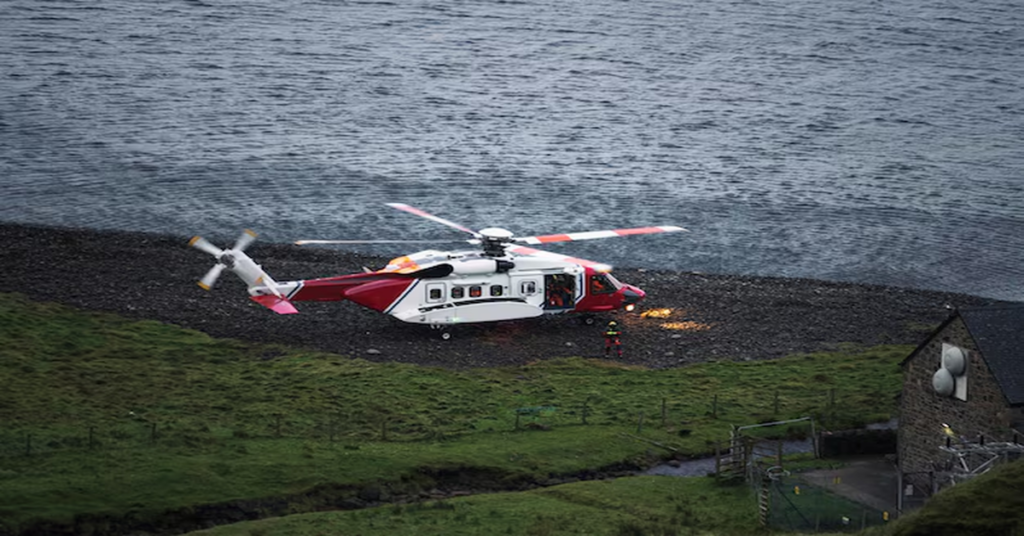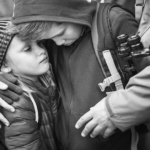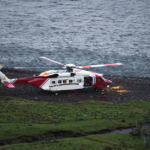Helicopter crashed are vital in various sectors, including military operations, emergency medical services, law enforcement, and corporate travel. Despite their versatility, helicopters are susceptible to crashes, which often attract widespread media attention due to their complexity and potential for catastrophic outcomes. Understanding the causes, prevention measures, and safety protocols surrounding helicopter crashes is crucial for enhancing aviation safety. This comprehensive article explores the primary causes of helicopter crashes, advancements in technology to prevent accidents, safety regulations, and tips for safer helicopter operations.
1. Common Causes of Helicopter Crashes
1.1 Human Error
Human error is the leading cause of helicopter crashes, accounting for approximately 70% of accidents. Mistakes can arise from:
- Pilot Fatigue: Long hours without adequate rest can impair judgment.
- Inadequate Training: Lack of proper training on specific helicopter models or emergency protocols.
- Miscommunication: Errors in communication between pilots and air traffic controllers.
- Poor Decision-Making: Flying in adverse weather or ignoring safety protocols.
1.2 Mechanical Failure
Mechanical failures, although less common, can have devastating consequences. Common issues include:
- Engine Malfunctions: Overheating, fuel starvation, or mechanical defects.
- Rotor System Failures: Issues with the main or tail rotor.
- Hydraulic System Failures: Loss of control due to hydraulic leaks or malfunctions.
1.3 Weather Conditions
Helicopter crashed are more susceptible to weather changes compared to fixed-wing aircraft. Adverse weather conditions that can lead to crashes include:
- Fog and Low Visibility: Difficulties in navigation and obstacle detection.
- High Winds and Turbulence: Sudden gusts can destabilize the helicopter.
- Icing: Accumulation of ice on rotor blades and sensors.
1.4 Bird Strikes and Foreign Object Damage (FOD)
Bird strikes are a significant risk, particularly during takeoff and landing. Other foreign objects on the landing pad or flight path can also cause damage.
1.5 Controlled Flight into Terrain (CFIT)
CFIT occurs when an airworthy helicopter unintentionally flies into the ground, water, or obstacles due to spatial disorientation or navigation errors.
2. High-Profile Helicopter Crashes and Lessons Learned
2.1 Kobe Bryant Helicopter Crash (2020)
- Cause: Pilot disorientation in dense fog.
- Lesson: Importance of weather assessments and adherence to instrument flight rules (IFR).
2.2 Leicester City Helicopter Crash (2018)
- Cause: Mechanical failure in the tail rotor.
- Lesson: Regular maintenance and pre-flight checks are crucial.
2.3 Military Helicopter Crashes
Military operations involve complex environments, increasing the risk of accidents. Lessons from these incidents highlight the importance of rigorous training and advanced avionics.
3. Safety Measures and Technological Advancements
3.1 Pilot Training and Certification
Enhancing pilot training programs ensures better handling of emergency situations. Key components include:
- Simulator Training: Allows pilots to experience various scenarios.
- Recurrent Training: Regular refresher courses.
- Crew Resource Management (CRM): Focuses on teamwork and communication.
3.2 Technological Innovations
Modern technology has significantly improved helicopter safety:
- Terrain Awareness and Warning Systems (TAWS): Alerts pilots of potential collisions.
- Autopilot Systems: Assists in maintaining stable flight.
- Weather Radar: Provides real-time weather data.
- Flight Data Monitoring (FDM): Tracks flight parameters to identify potential issues.
3.3 Maintenance and Inspection Protocols
Routine maintenance and inspections are vital. Key steps include:
- Pre-Flight Inspections: Checklists to ensure all systems function correctly.
- Scheduled Maintenance: Adhering to manufacturer recommendations.
- Component Tracking: Monitoring parts for wear and tear.
3.4 Regulatory Oversight and Compliance
Aviation authorities like the FAA (Federal Aviation Administration) and EASA (European Union Aviation Safety Agency) enforce strict safety regulations:
- Airworthiness Directives: Mandatory compliance for safety.
- Operational Limitations: Restrictions on flying in hazardous conditions.
- Certification Standards: High standards for aircraft and pilot licensing.
4. Passenger Safety Tips
Passengers can also contribute to flight safety by following these guidelines:
- Listen to Safety Briefings: Pay attention to pre-flight instructions.
- Wear Seatbelts: Always keep seatbelts fastened during flight.
- Follow Pilot Instructions: Especially during takeoff, landing, and turbulence.
- Secure Loose Items: Prevent objects from becoming hazards.
- Stay Calm in Emergencies: Follow crew directions promptly.
5. Emergency Response and Rescue Operations
5.1 Immediate Response Steps
In the event of a helicopter crashed, rapid response is critical:
- Alert Emergency Services: Call local authorities and provide accurate location details.
- Assist Injured Passengers: Administer first aid if possible.
- Evacuate the Area: Move away from potential hazards like fuel leaks.
5.2 Search and Rescue (SAR) Operations
SAR teams use advanced equipment to locate and rescue survivors:
- Emergency Locator Transmitters (ELTs): Transmit signals to guide rescuers.
- Helicopter Rescue Hoists: Lift survivors from difficult terrains.
- Drones: Provide aerial views for better assessment.
6. Psychological Impact of Helicopter Crashes
6.1 On Survivors and Families
Helicopter crashed can cause significant psychological trauma. Support mechanisms include:
- Counseling Services: Professional help for PTSD and anxiety.
- Support Groups: Connecting with others who have experienced similar events.
- Legal Support: Assistance with insurance claims and investigations.
6.2 On Aviation Professionals
Pilots and crew involved in accidents may require:
- Critical Incident Stress Debriefing (CISD): Immediate psychological support.
- Recurrent Training: Rebuilding confidence in flying.
- Peer Support Programs: Encouraging open discussions about mental health.
7. Case Studies: Helicopter Safety Improvements
7.1 Offshore Oil Rig Operations
Helicopters serving offshore oil rigs have improved safety through:
- Enhanced Weather Monitoring: Reducing weather-related accidents.
- Strict Boarding Procedures: Ensuring passenger safety.
7.2 Emergency Medical Services (EMS)
EMS helicopters have adopted safety protocols such as:
- Night Vision Goggles (NVGs): Improve visibility in low-light conditions.
- Helipad Standards: Safer landing zones at hospitals.
7.3 Corporate and VIP Transport
High-profile individuals require enhanced safety measures:
- Advanced Avionics: State-of-the-art navigation systems.
- Backup Pilots: Added layer of precaution.
- Stringent Maintenance Schedules: Minimize mechanical risks.
Conclusion
Helicopter crashed, while rare, underscore the importance of stringent safety measures, comprehensive pilot training, and technological advancements. Human error remains the leading cause, but with ongoing education, adherence to regulations, and investment in technology, the risks can be significantly mitigated. Passengers, operators, and aviation authorities all play pivotal roles in ensuring the safety of helicopter operations. Staying informed and proactive is key to preventing accidents and safeguarding lives.
FAQs
1. How common are helicopter crashes compared to airplane crashes?
Helicopter crashes occur more frequently per flight hour than airplane crashes due to operational differences and the environments in which helicopters operate.
2. What should I do if I witness a helicopter crash?
Immediately call emergency services, keep a safe distance, and avoid interfering with rescue operations unless you can safely assist.
3. Are certain types of helicopters more prone to crashes?
Helicopter models with outdated technology or those used in high-risk environments may have higher accident rates.
4. How do pilots prepare for potential mechanical failures?
Pilots undergo extensive training in emergency procedures and regularly practice simulated failure scenarios.
5. What role does weather play in helicopter crashes?
Adverse weather, such as fog, wind, and ice, significantly increases the risk of accidents, emphasizing the need for accurate forecasts and pilot discretion.
6. Can passengers refuse to fly if they feel conditions are unsafe?
Yes, passengers have the right to decline a flight if they believe conditions are unsafe. Communicating concerns to the pilot is always advisable.







